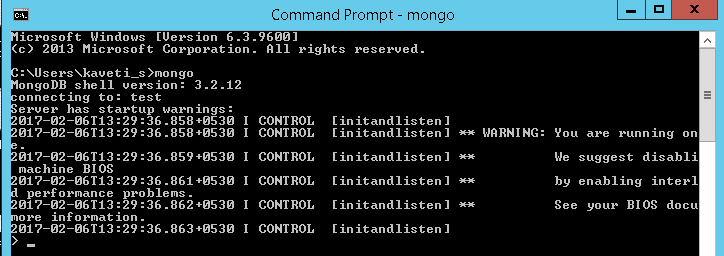MongoDB -Introduction
MongoDB is an open-source NoSQL, Document Database Written in C++ that provides high performance, high availability, and automatic scaling.
1.NoSQL (Not Only SQL)
It provides a mechanism for storage and retrieval of data other than tabular relations model used in relational databases. NoSQL database doesn’t use tables for storing data. It is generally used to store big data and real-time web applications.
NoSQL Database Types
-
Document databases: Documents can contain many different key-value pairs, or key-array pairs.
-
Graph stores: are used to store networks of data, such as social connections.
-
Key-value stores: simplest NoSQL databases. Every single item in the database is stored as an attribute name (or ‘key’), together with its value.
-
Wide-column stores such as Cassandra and HBase are optimized for queries over large datasets, and store columns of data together, instead of rows.

2.MongoDB Features & Advantages
-
High Performance : Indexes support faster queries
-
Rich Query Language: supports CRUD Operation, Data Aggregation, Text Search &Geospatial Queries.
-
High Availability: MongoDB’s replication facility, called replica set provide atomatic failover and Data redundancy.
-
Horizontal Scalability: Sharding (partitioning) distributes data across a cluster of machines.
3.MongDB Installation & Configuration
The MongoDB does not require installation, just download and extracts the zip file, configure the data directory and start it with command -mongod-.
-
Download MongoDB and extract into some folder, ex: d:/mongodb
-
Create following directories inside d:/mongodb
- D:\mongodb\data
- D:\mongodb\log
-
Configure Environmnet variables
MongoDB = D:\mongodb PATH=%MongoDB%\bin
- Create a mongodb config file under :
d:\mongodb\mongo.config##store data here dbpath=D:\mongodb\data ##all output go here logpath=D:\mongodb\log\mongo.log ##log read and write operations diaglog=3 - Start MongoDB using any of below commands
D:\mongodb\bin>mongod –dbpath=D:/mongodb (or) d:\mongodb\bin>mongod.exe --config="D:\mongodb\mongo.config" -
Connect to MongoDB using mongo command

- once MongoDB Started, We need to create Admin User as below ```json use admin
db.createUser( { user: “admin”, pwd: “passw0rd”, roles: [ { role: “userAdminAnyDatabase”, db: “admin” } ] } )
- Now, Authenticate as the user administrator.
```powershell
mongo --port 27017 -u "admin" -p "passw0rd" --authenticationDatabase "admin"
Use MongoDB as a Service
To start MongoDB Service
net start MongoDB
To stop MongoDB Service
net stop MongoDB
To remove MongoDB Service
c:\mongodb\bin>mongod --remove